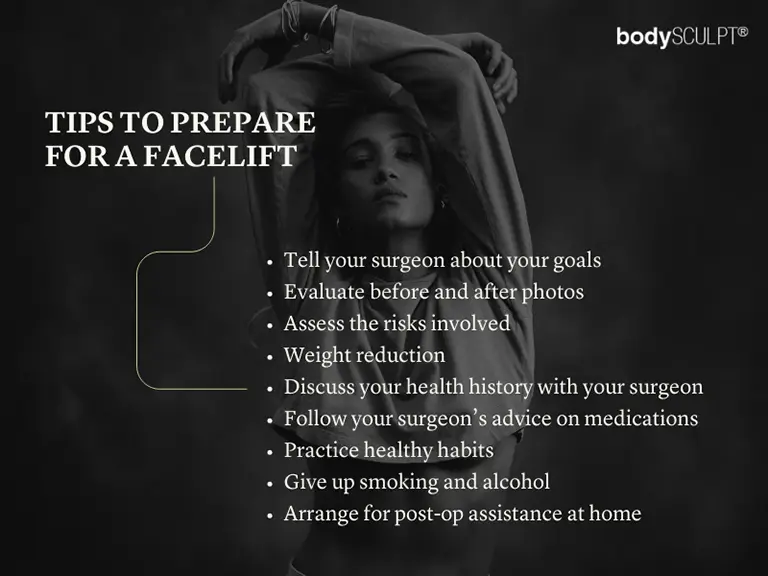The goal of a facelift in NYC is to improve signs of facial aging by repositioning or removing skin, fat and/or muscle. An essential first step in any cosmetic procedure is preparation and that’s also the case with facelifts. Minimally invasive techniques now enable patients to enhance facial appearance in short downtime.
Taking proactive measures in advance of your treatment promotes a comfortable experience and optimal results.
- Evaluate before and after photos: Make sure to look at before and after facelift photos of former patients before undergoing the surgery. This will give you an idea about the surgeon’s skill.
- Talk about your goals: You should discuss your aesthetic goals with your plastic surgeon. It is important to have realistic expectations. This is a crucial conversation is important for your surgeon to plan the procedure.
- Assess the risks involved: Every surgery has certain risks involved in it. Be prepared to discuss the possible risks and complications involved in the procedure with your surgeon. Rare complications may include bleeding, infection and wound healing problems.
- Weight reduction: If you are overweight, try to cut down some pounds and achieve a weight that you are comfortable with. Maintaining a stable body weight can improve the outcome of the surgery.
- Discuss your health history: Ensure that your plastic surgeon is aware of your medical history and the medications you take.
- Discuss the drugs you already take: During your initial visit, discuss all of your prescription drugs with your surgeon. In order to make sure you are safe throughout your treatment, the surgeon will speak with your prescribing physician if necessary to decide whether you need to modify or stop taking your prescriptions.
- Give up smoking: When you’re getting ready for a facelift, you shouldn’t be using any kind of nicotine. Nicotine can cause complications both during and after your surgery by limiting blood flow. Give up on smoking, and vaping right away.
- Don’t take certain over-the-counter drugs: To reduce risk of excessive bleeding, avoid taking aspirin, anti-inflammatory medications, and herbal supplements. During your consultation, ask your plastic surgeon any questions you may have about a prescribed drug.
- Arrange for post-op assistance at home: Any kind of surgery, including facelifts, entails recovery time. Make sure to enlist the assistance of your friends and family before your treatment. For a few days following your operation, you will require someone to take care of you and help with household chores.
- Practice healthy habits: Maintain a balanced diet and get frequent exercise. To get the best results from any cosmetic surgical procedure, you should be in good health.
- Steer clear of alcohol: Generally speaking, you should abstain from alcohol five days prior to your procedure. Alcohol thins the blood and increases the possibility of severe bleeding after surgery.
The success of your face lift largely depends on the expertise of your surgeon. Look for a plastic surgeon with extensive experience in performing facelifts. Review their portfolio of before-and-after photos, read patient testimonials, and schedule a consultation to discuss your goals and concerns.
Preparing for a facelift involves careful planning and consideration. If you’re considering a face lift in NYC, following the above-listed guidelines and working closely with a qualified surgeon will help you approach the procedure with confidence and facilitate a smoother recovery process.
Ready to transform your appearance with a face lift in NYC? Schedule a consultation with our plastic surgeon.


